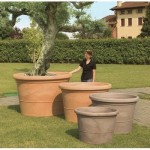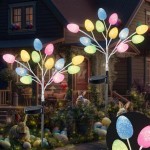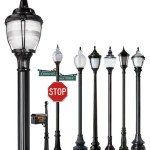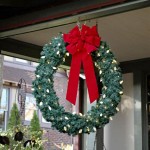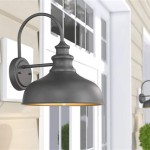Outdoor Dining Area Lighting Design Ideas
Outdoor dining areas have become increasingly popular, transforming patios and backyards into extensions of the home. A crucial element contributing to the ambiance and functionality of these spaces is the lighting design. Effective lighting not only allows for safe navigation and food preparation after dark but also creates an inviting and aesthetically pleasing environment conducive to relaxation and socializing. Thoughtful consideration of various lighting techniques and fixture choices is paramount in achieving a successful outdoor dining area design.
The design process should begin with an assessment of the space's existing features, identifying potential challenges and opportunities. Factors such as the size and shape of the dining area, the presence of overhead structures like pergolas or trees, and the surrounding landscape all influence the selection and placement of lighting fixtures. Furthermore, the intended use of the space should be taken into account. Is it primarily for casual family dinners, formal gatherings, or a combination of both? Answering these questions will help determine the appropriate level of brightness and the desired mood.
Layering Light for a Balanced Ambiance
One of the fundamental principles of lighting design is layering, which involves combining different types of light sources to achieve a balanced and visually appealing effect. This approach avoids harsh, uniform illumination and creates depth and dimension, enhancing the overall atmosphere. The three primary layers of light are ambient, task, and accent lighting. Integrating these layers effectively is crucial for creating a functional and inviting outdoor dining space.
Ambient lighting, also known as general lighting, provides the overall illumination for the space. Its purpose is to create a base level of brightness that allows people to move around safely and see each other comfortably. Several options are available for achieving ambient lighting in an outdoor dining area. String lights, suspended from pergolas or trees, offer a soft, diffused glow that creates a festive and welcoming atmosphere. Alternatively, post lights strategically placed around the perimeter of the dining area can provide ample illumination while defining the space. For a more contemporary look, recessed lighting installed in overhead structures can provide a clean and unobtrusive source of ambient light.
Task lighting is designed to illuminate specific areas where focused light is needed. In an outdoor dining area, this typically includes the dining table itself and any adjacent food preparation areas, such as a grill or outdoor kitchen. Over the dining table, consider pendant lights or chandeliers that hang directly above, providing focused light for eating and conversation. The height of these fixtures should be carefully adjusted to avoid glare and ensure comfortable illumination. For grilling areas, dedicated task lights are essential. These can include spotlights mounted on adjustable arms or integrated lighting within the grill itself. The goal is to provide sufficient brightness to safely and efficiently prepare food.
Accent lighting is used to highlight specific features or architectural elements within the outdoor dining area. This can include spotlighting plants or sculptures, illuminating textured walls, or washing a fence with light to create a sense of depth. Accent lighting adds visual interest and drama to the space, enhancing its overall aesthetic appeal. Low-voltage landscape lighting is a popular choice for accenting plants and trees. These fixtures are typically discreetly placed and angled to uplight the foliage, creating a soft, ambient glow. For architectural features, consider using wall sconces or spotlights to emphasize their unique characteristics. The key is to use accent lighting sparingly and strategically to draw attention to the most visually appealing elements of the space.
Selecting Appropriate Lighting Fixtures
The choice of lighting fixtures is critical to the success of any outdoor dining area design. Not only must the fixtures provide the appropriate type and level of illumination, but they must also be durable, weather-resistant, and aesthetically compatible with the overall design scheme. Several factors should be considered when selecting outdoor lighting fixtures, including material, style, and light source.
Materials commonly used in outdoor lighting fixtures include aluminum, stainless steel, copper, and brass. These materials are chosen for their durability and resistance to corrosion. Aluminum is a lightweight and relatively inexpensive option, while stainless steel offers superior strength and corrosion resistance. Copper and brass develop a natural patina over time, adding a touch of rustic charm to the outdoor space. When selecting materials, consider the climate in which the fixtures will be used. Coastal areas with high salt content require fixtures made from corrosion-resistant materials such as stainless steel or marine-grade aluminum.
The style of the lighting fixtures should complement the overall design aesthetic of the outdoor dining area. Whether the style is modern, traditional, rustic, or eclectic, there are fixtures available to suit virtually any taste. Modern outdoor lighting fixtures often feature clean lines, minimalist designs, and sleek finishes. Traditional fixtures may incorporate ornate details, classic shapes, and warm finishes such as bronze or copper. Rustic fixtures often incorporate natural materials such as wood, stone, and wrought iron. When selecting fixtures, consider the surrounding architecture, landscaping, and furniture to create a cohesive and harmonious look.
The light source used in outdoor lighting fixtures is another important consideration. Traditionally, incandescent bulbs were the standard choice, but they are now being largely replaced by more energy-efficient alternatives such as LED (light-emitting diode) and halogen bulbs. LED bulbs offer several advantages over incandescent bulbs, including longer lifespan, lower energy consumption, and greater durability. They also produce less heat, making them safer for outdoor use. Halogen bulbs offer a brighter, whiter light than incandescent bulbs, but they are less energy-efficient and have a shorter lifespan. When selecting light sources, consider the desired color temperature. Warm white light (2700-3000K) creates a cozy and inviting atmosphere, while cool white light (4000-5000K) provides a brighter, more energizing effect. The choice of color temperature will depend on the overall mood and intended use of the outdoor dining area.
Considerations for Safety and Functionality
In addition to aesthetics and ambiance, safety and functionality are paramount considerations in outdoor dining area lighting design. Proper lighting can prevent accidents, deter intruders, and enhance the usability of the space after dark. Several key factors should be taken into account when addressing these aspects of the design.
Adequate lighting is essential for safe navigation around the outdoor dining area. This includes illuminating pathways, steps, and any other potential hazards. Path lights are a popular choice for illuminating walkways, providing a soft, diffused glow that guides people safely through the space. Step lights can be installed on stairways to prevent trips and falls. These fixtures are typically recessed into the risers or treads, providing a discreet and effective source of illumination. Motion-activated lights can be installed near entrances and exits to provide added security and deter intruders. These lights automatically turn on when motion is detected, illuminating the area and alerting homeowners to potential threats.
Weather resistance is a crucial consideration for all outdoor lighting fixtures. Fixtures used in outdoor environments must be able to withstand exposure to rain, wind, sun, and extreme temperatures. Look for fixtures with a high IP (ingress protection) rating, which indicates the level of protection against dust and water. A rating of IP65 or higher is generally recommended for outdoor lighting fixtures. In addition to weather resistance, fixtures should be made from durable materials that can withstand impacts and vandalism. Vandal-resistant fixtures are particularly important in public spaces.
Finally, consider the placement of electrical outlets and wiring. Outdoor lighting fixtures require a power source, so it is important to ensure that there are sufficient electrical outlets available in the area. If necessary, have an electrician install additional outlets to accommodate the lighting design. All electrical wiring should be buried underground and protected by conduit to prevent damage from the elements. It is also important to install a ground fault circuit interrupter (GFCI) outlet to protect against electrical shock. GFCIs are designed to detect ground faults and immediately shut off the power, preventing serious injury or death.
By carefully considering these design principles and practical considerations, homeowners can create outdoor dining areas that are both beautiful and functional, providing a welcoming and enjoyable space for relaxing and entertaining.

Setting Outdoor Lights For Patio Celebrations Balsam Hill

24 Backyard Lighting Ideas To Upgrade Your Patio

21 Best Outdoor Lighting Ideas Easy Patio

10 Best Outdoor Lighting Ideas Landscape Design Secrets

8 Outdoor Kitchen Lighting Ideas Angi

Backyard String Lights Decorating Ideas For Summer 2024

Glowing Gatherings 25 Covered Patio Lighting Concepts Lightopia

Create An Outdoor Dining Space That Delights By Day And Glows At Night A Powerful Gas Grill Stylish Furniture String Lights Make Alfresco Unforgettable

Creative Patio Lighting Ideas To Enhance Your Outdoor Space Triangle Gardener

Outdoor Lighting Ideas For Your Porch Patio Or Terrace Architectural Digest
